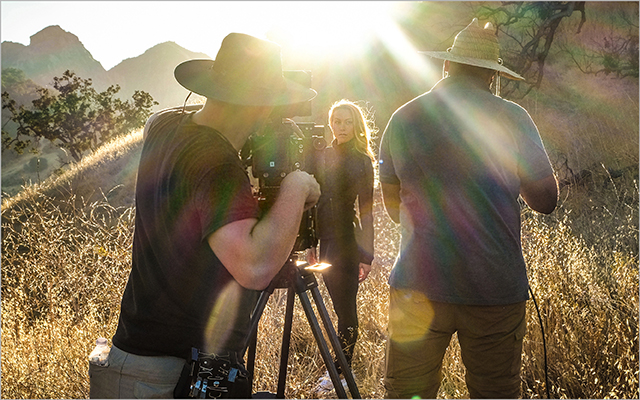Lolo Jones is no ordinary track-and-field athlete. Among other distinctions, she holds the American record in the 60-meter hurdles with a time of just 7.72 seconds. But for all of Jones’s victories, she also knows the heartbreak of defeat. Jones (whose first name is actually Lori) is currently training for the 2012 Olympics in London, where she hopes to win the gold medal that eluded her at the 2008 Olympics in Beijing. Experience Life senior editor Laine Bergeson caught up with Jones by phone to find out how she keeps on tirelessly pursuing new personal bests.
EL | You’re known for your stamina. When your energy is fading and you’re facing big obstacles, how do you find the drive to keep going?
LJ | I just think of the end result I’m hoping for. I think of how it would feel to be an Olympic champion. Whatever your goal, think about what it would feel like to achieve it. I always keep my end goal in mind for the hard days, because there’s going to be a lot of hard days. But then when you achieve your goal, it’s so much more rewarding to know that you fought all these battles to get there. And when you’re passionate about something and it’s something you love, that really helps you get the energy going to get through the hard times.
EL | What is your best advice for setting and achieving goals?
LJ | Set one big goal, but within that big goal, set a whole bunch of mini-goals so that you don’t get overwhelmed. Every day, I can’t just think, ‘OK, I’m going to be an Olympic champion.’ It’s too overwhelming. I have to think about small things, like, when I work out, am I doing everything I should be doing? Am I pushing my body to its limits?
EL | What’s your training regimen?
LJ | Right now I’m doing a lot of technical sprinting stuff. In the fall, I’ll do a lot of grass training. I don’t even get on the track. If there’s a park, I can do a full workout just by running on the grass and doing some intervals. I also lift weights every day — heavy weights on Monday, Wednesday and Saturday. On Tuesdays and Thursdays, I lift my body weight with exercises like pushups and pull-ups.
EL | Given how hard you work out, what’s your recovery strategy?
LJ | Rest and relaxation is pivotal. Usually after a hard workout, I make sure I take a nap, and I know most people can’t do that. But we have a saying in track and field: It’s that rest is just as important as work, because if you overwork yourself, you’re defeating the whole purpose. I work out six days a week, and then I take one day off where I do absolutely nothing.
EL | Rumor has it that you’ve started doing yoga, too. What inspired that?
LJ | I was having this nagging injury. The doctors weren’t sure what it was but thought it might be an inflamed sciatica nerve. I discovered that stretching helped the pain. A lot of people were like, ‘Oh, you’re an Olympic hurdler; you’re already flexible. Yoga will be easy for you.’ No, no, no! I was doing a beginner’s DVD, and I was struggling. But after about two sessions, my body started relaxing and I kept thinking, ‘I didn’t know I could do this!’ And now I can touch my toes.
EL | You’ve had some painful disappointments in your pursuit of an Olympic medal. You failed to qualify for the Olympics in 2004. At the 2008 Olympics in Beijing you hit the second-to-last hurdle and came in seventh. How have you dealt with those big let-downs?
LJ | I use the things that I don’t achieve as motivation. So the first time I didn’t make the Olympic team, I worked harder and qualified four years later. Everybody thought it was my moment. I was No. 1 in the world going into the 2008 Olympics, and I was still No. 1 as the fastest hurdler in the world going out. I just didn’t have a medal, so I’ve used that to gear up for 2012. I always keep trying — because it would make no sense to tell people that I’m a professional hurdler but that I don’t jump the hurdles in my own life.
EL | You went to high school in Des Moines, Iowa, which is known for its track and field program. When your mom decided to move out of Des Moines, you chose to stay behind. What made you decide to stick it out on your own?
LJ | At that time, I’d already started getting recruitment letters from colleges across the country: LSU, Florida, Texas, Harvard. I didn’t want to move from Des Moines and risk losing what I had already started. I chose Louisiana State University, which has one of the top track-and-field programs in the country.
EL | You bought running shoes for all the kids on the track team at your old high school. You donated some of the prize money you won in 2008 to a single mom who had been badly affected by the severe flooding in Iowa. What does giving back mean to you?
LJ | It makes me happy, and it just gives me peace. When someone tells me that they are struggling or feeling a lot of pressure in their own life, I ask, ‘What have you done to help out somebody else lately?’ If you’re feeling down or if you’re going through a rough spot, help somebody out. I guarantee it will put light in your day.
EL | What’s next for you?
LJ | I have the U.S. Championships [this month], and that will determine who makes the World Championship Team. And then, hopefully, the Olympics.
The big picture for me is having that perfect race, setting myself up to be the best in the world, and leaving my legacy. That never changes. That’s the whole goal.




This Post Has 0 Comments